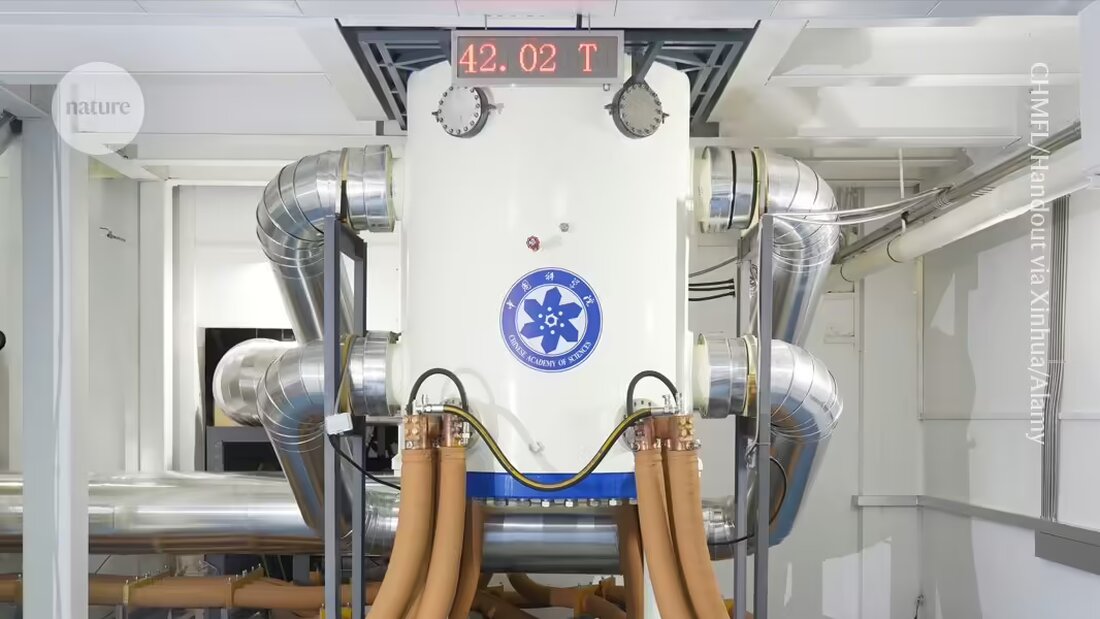China is building a record-breaking magnet – but not without a price
China has set a record of 42.02 Tesla with a new resistive magnet, but high energy costs remain problematic.

China is building a record-breaking magnet – but not without a price
China is now home to the world's most powerful resistive magnet, which produced a magnetic field more than 800,000 times stronger than Earth's.
On September 22, the magnet maintained a constant magnetic field of 42.02 Tesla at the Steady High Magnetic Field Facility (SHMFF) at the Hefei Institutes of Physical Sciences of the Chinese Academy of Sciences. This milestone narrowly beats the record of 41.4 Tesla set in 2017 by a resistive magnet at the US National High Magnetic Field Laboratory (NHMFL) in Tallahassee, Florida. Resistive magnets consist of wound metal wires and are used in magnet systems worldwide.
The record holder from China lays the foundation for building reliable magnets that can maintain ever stronger magnetic fields. This would allow researchers to discover surprising new physics insights, says Joachim Wosnitza, a physicist at the Dresden High Field Laboratory in Germany.
The resistive magnet, open to international users, is China's second major contribution to the global push to generate ever higher magnetic fields. In 2022, the SHMFF's hybrid magnet, which combines a resistive magnet with a superconducting one, produced a field of 45.22 Tesla and is considered the most powerful working permanent magnet in the world.
Research tool
High field magnets are useful tools for revealing hidden properties of advanced materials such as Superconductors – Materials that conduct electricity at very low temperatures without losing heat. High fields also offer the opportunity to discover entirely new physical phenomena, says Marc-Henri Julien, a solid-state physicist at the National Laboratory for Intense Magnetic Fields in Grenoble, France. “You can create or manipulate new states of matter,” explains Julien.
High fields are also useful for experiments based on very sensitive measurements because they increase resolution and make it easier to detect faint phenomena, says Alexander Eaton, a solid-state physicist at the University of Cambridge, UK. “Each additional Tesla is exponentially better than the last,” he adds.
Guangli Kuang, a physicist who specializes in high magnetic fields at SHMFF, explains that the team spent years modifying the magnet to achieve the latest record. “It wasn’t easy to make it happen,” he says.
Reliable but expensive
Resistive magnets are an older technology, but can maintain magnetic fields for longer periods of time than their newer hybrid and fully superconducting counterparts, Wosnitza explains. Their magnetic fields can also be increased much more quickly, making them versatile experimental tools. “You can just turn a switch and go from zero Tesla to high fields in minutes,” he says.
The big disadvantage of resistive magnets is the high power consumption, which makes them expensive, Eaton says. So the SHMFF's resistive magnet drew 32.3 megawatts of electricity to create its record-breaking field. “You have to have a very good scientific reason to justify this resource,” Eaton explains.
This challenge is driving the race to develop hybrid and fully superconducting magnets that can generate high fields with less energy. In 2019, NHMFL researchers built a miniaturized, proof-of-concept superconducting magnet that briefly Field of 45.5 Tesla maintained, and are currently developing a larger 40 Tesla superconducting magnet for experiments. The team at SHMFF is building a hybrid magnet with 55 Tesla. Although these newer magnets are expected to be less expensive to operate than their resistive predecessors, they come with their own challenges: They are more expensive to manufacture and require complicated cooling systems, explains engineer Mark Bird, co-lead of magnetic science and technology at NHMFL. “The technology is still being developed and the costs are not yet clear,” says Bird.

 Suche
Suche
 Mein Konto
Mein Konto
